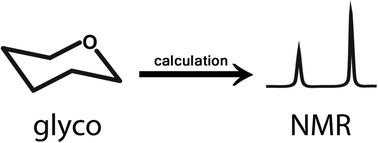All living systems are comprised of four fundamental classes of macromolecules – nucleic acids, proteins, lipids, and carbohydrates (glycans). Glycans play a unique role of joining three principal hierarchical levels of the living world: (1) the molecular level (pathogenic agents and vaccine recognition by the immune system, metabolic pathways involving saccharides that provide cells with energy, and energy accumulation via photosynthesis); (2) the nanoscale level (cell membrane mechanics, structural support of biomolecules, and the glycosylation of macromolecules); (3) the microscale and macroscale levels (polymeric materials, such as cellulose, starch, glycogen, and biomass). NMR spectroscopy is the most powerful research approach for getting insight into the solution structure and function of carbohydrates at all hierarchical levels, from monosaccharides to oligo- and polysaccharides. Recent progress in computational procedures has opened up novel opportunities to reveal the structural information available in the NMR spectra of saccharides and to advance our understanding of the corresponding biochemical processes. The ability to predict the molecular geometry and NMR parameters is crucial for the elucidation of carbohydrate structures. In the present paper, we review the major NMR spectrum simulation techniques with regard to chemical shifts, coupling constants, relaxation rates and nuclear Overhauser effect prediction applied to the three levels of glycomics. Outstanding development in the related fields of genomics and proteomics has clearly shown that it is the advancement of research tools (automated spectrum analysis, structure elucidation, synthesis, sequencing and amplification) that drives the large challenges in modern science. Combining NMR spectroscopy and the computational analysis of structural information encoded in the NMR spectra reveals a way to the automated elucidation of the structure of carbohydrates.
